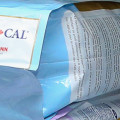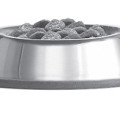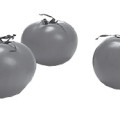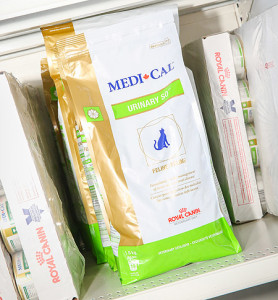 How to read a pet food label
How to read a pet food label
It is important that you understand exactly what it is you are buying when you go to purchase a food to feed your pet.
The pet food label: key information
Ingredient listing: Ingredients are the delivery vehicles for nutrients and are listed on a pet food label in descending order by weight
Ingredients such as chicken, beef or lamb contain more than 50% water making them weigh more than dry ingredients such as grains, meat/poultry meals, minerals & vitamins, so they are listed first
The guaranteed analysis: The guaranteed analysis is designed to provide consumers with nutrient information about the pet foods they purchase. It indicates minimum or maximum levels of nutrients such as protein, fat and fibre in the product to guide consumers. It is important to remember, however, that the guaranteed analysis is not an indication of the actual nutrient content of the food
The minimum guarantee gives the lowest amount of the nutrient in the food, not the actual amount. For example, the minimum fat guarantee may be 8% but the product can legally contain 15% fat or more. Likewise, a product with a maximum guarantee of 5% fibre may only contain 1%
Obtaining the actual nutrient content from the manufacturer is a better way to evaluate products
The nutritional adequacy statement: This portion of the label verifies that the food provides complete and balanced nutrition for growing animals, pregnant and nursing mothers, or adults – or it might say the product is nutritionally adequate for all of these groups (“all lifestages”)
Caution should be exercised when considering foods intended for “all lifestages.” They may contain excessive levels of some nutrients – making them inappropriate for adult and senior pets
The manufacturer’s name and toll-free phone number: Consumers are encouraged to call the 800number for product information not on the labelsuch as the actual nutrient content of the food and itscaloric content. There is no way to determine the true quality of a pet foodby reading the ingredient listing or the guaranteed analysis.In fact, two products that may appear to have the sameguaranteed analysis might have actual nutrient levels thatvary significantly.
Determining quality
Individual ingredients do NOT determine the quality of a pet food. It’s the nutritional value of each ingredient blended together that delivers a product specific for a pet’s age or condition. The guaranteed analysis is not a guarantee of nutritional quality – nor is the ingredient list or the presence or absence of certain ingredients.
AAFCO standards
AAFCO stands for Association of American Feed Control Officials. This organization sets the nutritional standards for pet foods sold in the United States. These standards are also recognized in Canada. The nutritional adequacy of pet foods is generally determined by one of two methods based on nutritional levels and procedures defined by AAFCO:
Feeding trial method
This method is also known as the “Gold Standard” for determining nutritional adequacy. The manufacturer must perform an AAFCO protocol feeding trial using the food being tested as the sole source of nutrition
Feeding trials are the best way to document how a pet will perform when fed a specific food
For example, “Animal feeding tests using AAFCO procedures substantiate that Brand Y Adult dog food provides complete and balanced nutrition for maintenance of adult dogs.”
Formulation method
This method is less expensive and results are determined more quickly as actual feeding or digestibility trials are not required
There is no guarantee of pet acceptance or nutrient bioavailability when utilizing this method
For example, “Brand X Cat Formula is formulated to meet the nutritional levels established by the
Association of American Feed Control Officials Cat Food Nutrient Profiles for Maintenance.”
Alternative foods
There is an abundance of unsubstantiated information regarding alternative foods for pets available to the public via the Internet and other sources. However, pet owners should be aware of the facts if they are considering an alternative food for their pet.
BARF formula (Bones And Raw Food)
• The BARF formula consists of a combination of raw meat, eggs, meaty bones and vegetables
• There is no scientific data to support beliefs commonly held by BARF supporters
• Some published BARF recipes contain excessive levels of Key Nutritional Factors such as protein, calcium and phosphorus for an adult dog or cat
• Food poisoning and bacterial contamination are obvious safety hazards for not only pets eating raw foods but the humans handling raw foods as well
• Pets eating BARF or other raw food formulas are at an increased risk for intestinal obstruction, fractured teeth and gastrointestinal perforation
Home-cooked pet meals
• In one study, 90% of homemade pet foods were found to be nutritionally unbalanced & incomplete
• Pet owners and pets may be exposed to dangerous bacteria such as salmonella and listeria harboured by raw or insufficiently cooked meat
• Pet owners may assume dogs & cats require the same nutrition as humans & provide improper levels of multiple nutrients
• Homemade meals can contain an inverse calcium and phosphorus ratio dangerous to pets
A WORD ABOUT PRESERVATIVES
Preservatives are ingredients used in pet food to prevent spoilage and rancidity. Here are the facts about preservatives commonly found in commercially manufactured pet foods:
• BHA and BHT are examples of synthetic antioxidant preservatives approved by the Canadian Food Inspection Agency (part of Health Canada) when used at recommended levels
• Many human foods, such as bread, cheese, margarine, potato chips, meat, and frozen and
dried fruits, contain BHA and BHT
• Natural preservatives include tocopherols (vitamin E), spice extracts and citric acid
The corn myth
MYTH: CORN CAUSES FOOD ALLERGIES IN PETS.
FACT: Studies show that corn causes no more food allergies than any other grain. Corn is NOT a common cause of adverse food reactions in pets. Beef, dairy and wheat account for 68% of canine food allergy cases and lamb, chicken, chicken egg, and soy account for 25% canine food allergy cases. Beef, dairy and fish account for 80% of feline food allergy cases.
MYTH: CORN IS DIFFICULT TO DIGEST and CORN IS JUST A FILLER
FACT: Most grains, including corn, are poorly digested before they are cooked. Once cooked, however, they become highly digestible.
FACT: Corn is a superb source of nutrients.
- Essential fatty acids for healthy skin and coat
- Beta-carotene, vitamin E, lutein – nature’s antioxidants
- Highly digestible carbohydrates for energy
- Quality proteins for muscle and tissue growth
By-products as ingredients
MYTH: PET FOODS CONTAINING INGREDIENTS LISTED AS “BY-PRODUCTS” ARE INFERIOR.
FACT: By-products are common ingredients in both human and pet food.
- A by-product is simply “something produced in the making of something else.”
- When processing soybeans, for example, the by-product vitamin E is produced
- Mixed tocopherols (such as vitamin E), used as natural preservatives in pet foods, are by-products of the soybean industry
- Vegetable oils (such as fl axseed oil, rice bran oil, corn oil and soy oil) are by-products extracted from seeds that are processed for consumption purposes
- Chicken fat is a by-product of the chicken industry
- Pork, chicken and beef liver are internal organs of animals used for human consumption
- Beet pulp is dried residue from sugar beets
- Tomato pomace comes from tomato skins, pulp and seeds
QUIZ: What do vitamin E, JELL-O® brand gelatin, beef bouillon and lamb meal have in common? They’re all by-products!
The truth about natural vs. organic labeling
MYTH: NATURAL MEANS ORGANIC.
FACT: Natural and organic are not interchangeable.
- Other truthful claims, such as free-range, hormone-free, and natural, can still appear on food labels. However, do not confuse these terms with “organic.” Only food labeled “organic products” has beencertified as organic in accordance with Agriculture and Agri-Food Canada (AAFC) regulations
*2007 AAFCO page 130
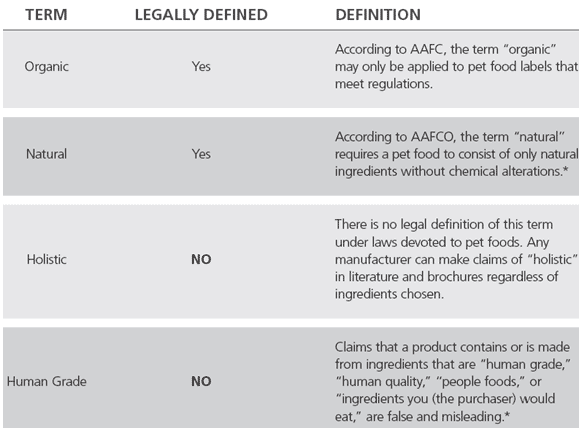
Pet aging and lifestages
As your pet ages from birth into adulthood and finally mature adulthood, its nutritional needs change. These changing nutritional needs are called “lifestage nutrition.” Lifestage nutrition is designed to meet the optimal nutritional requirements of animals at the puppy/kitten, adult and mature adult stages of their lives.
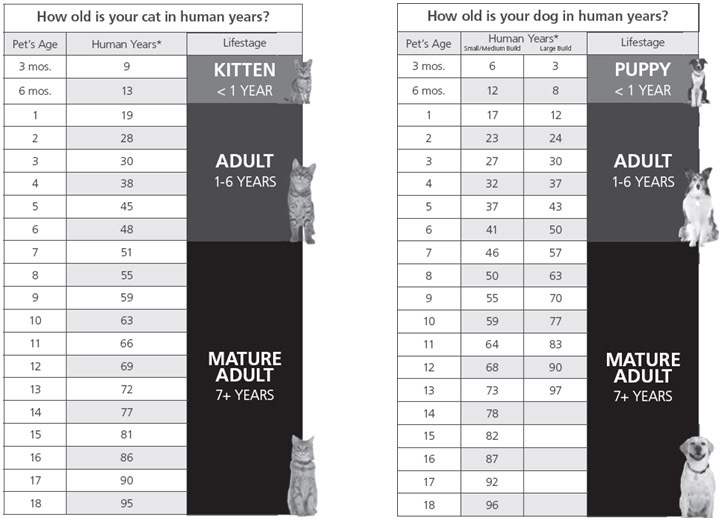
Grocery store vs. pet store vs. veterinary exclusive pet food brands
The right information is your best resource when choosing a food for your pet. Grocery store and pet store employees may have limited information and rely only on the food labels and manufacturer’s claims when offering nutrition advice. Your veterinarian and veterinary health care team have the training, resources and knowledge of your pet’s health history to make the right nutritional recommendation for your pet’s age and lifestage.
SOME ADDITIONAL ITEMS TO CONSIDER WHEN CHOOSING A PET FOOD:
Is the food tailored to address specific dietary requirements and contain the right balance of nutrients to meet the needs of pets based on lifestage, activity level or health condition?
Many generic brands sold in grocery and pet stores offer “All Lifestages” products that do not tailor key nutrients like protein, calcium or sodium to health requirements of different ages from puppy/kitten to mature adult.
Are the ingredients screened to avoid nutrient excess?
Excess amounts of nutrients such as phosphorous, sodium, calcium or magnesium can be dangerous to a pet’s health.
How much of the manufacturing process takes place “in-house”? Are any inspections of the manufacturing facilities conducted by independent certification authorities?
Manufacturing policies vary per company. Please discuss these considerations with your veterinarian or veterinary health care team to learn more about manufacturing standards, policies and certification processes pertaining to your pet food brand.
Is the manufacturer’s product development backed by research and does it have high levels of clinical testing demonstrating the efficacy and safety of the ingredients used in its products?
Pet foods carried exclusively by a veterinary clinic and recommended by any veterinary health care team member are carefully researched to ensure the product is of the highest quality and will best suit the needs of pets based on age, lifestyle or disease condition.
Obesity
Do you recognize the signs of excess weight? Body Condition Scoring helps determine if a pet’s growth rate and feeding procedures are correct. Proper growth and weight can help prevent obesity and growth-related skeletal disease.
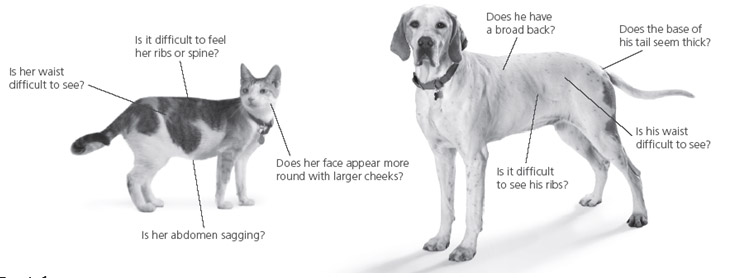
Dental
By age three, 80% of dogs and cats show signs of periodontal disease including:
- Red and swollen gums
- Bad breath
- Pain
- Tooth loss
If left untreated, this eventually progresses to plaque accumulation, gum recession, loosened teeth, bad breath, inflammation and bleeding of the gums, and eventually loss of teeth, oral infections, and even poor overall health. Treatment options include chewing exercises, regular tooth brushing and feeding a dry food specially formulated to reduce plaque, tartar and gingivitis.
Mature pet health
Around the age of seven, dogs and cats begin to enter their “golden years.” Just like older people, pets age seven and older experience physical and behavioural changes, putting them at greater risk for age-related diseases such as:
- Kidney disease
- Obesity
- Heart disease
- Brain aging/behavioural changes
- Arthritis
- Urinary tract disease
You can reduce the risk of health problems and help your pet live a longer, better quality life with regular veterinary care, including annual kidney screens, and feeding the best nutrition for his or her changing needs.
©2007 Hill’s Pet Nutrition Canada, Inc. ®/™



